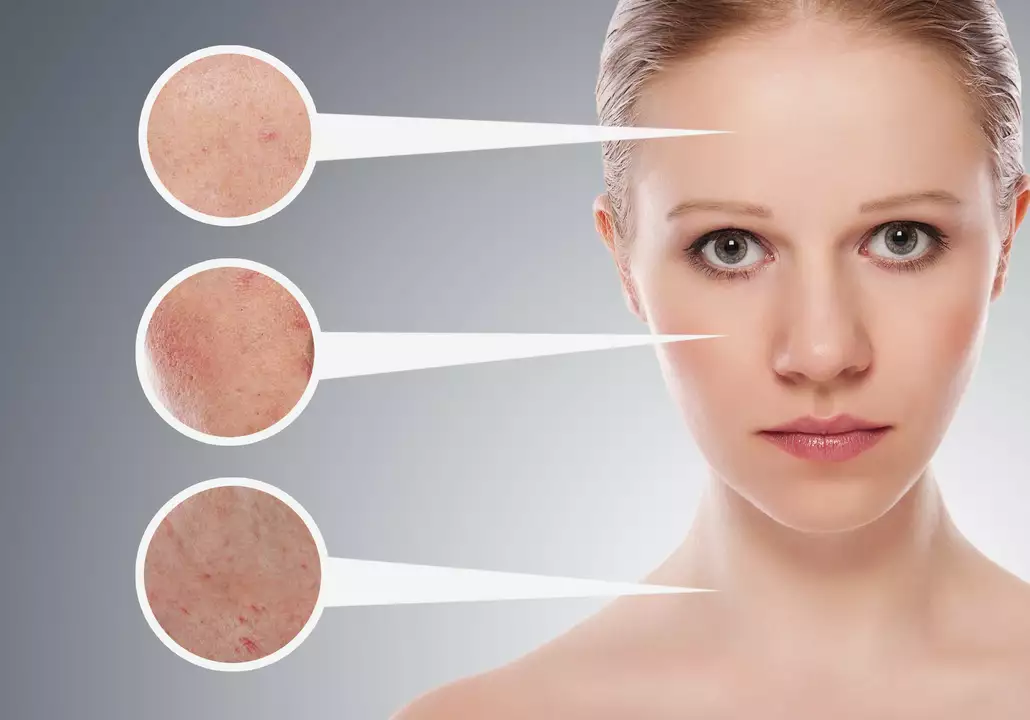Redness, bumps, itch, or flaky patches — skin problems are annoying and common. You don’t always need a specialist. With a few simple steps you can ease symptoms fast, spot trouble signs, and choose safer over-the-counter options while deciding if you need a doctor.
First, identify what you’re dealing with. Acne usually shows as pimples, blackheads, or deeper cysts on the face, chest, or back. Eczema causes dry, itchy patches often behind knees or inside elbows. Psoriasis looks like thick, silvery plaques on elbows, knees, or scalp. Fungal infections (athlete’s foot, ringworm) are itchy, well-defined rings or scaly feet. Contact dermatitis appears where skin touched a new soap, lotion, or metal.
Start small and be consistent. For dry, red eczema, use a thick, fragrance-free moisturizer twice daily and a short course of 1% hydrocortisone cream on flared areas (follow label). For mild acne, try a cleanser with salicylic acid or a spot treatment with benzoyl peroxide. Over-the-counter antifungal creams with clotrimazole or terbinafine work well for ringworm and athlete’s foot — keep the area dry and change socks often.
If you suspect a bacterial skin infection like impetigo (honey-colored crusts), see a provider — topical mupirocin or oral antibiotics may be needed. For persistent rashes that don’t respond to OTC care, a dermatologist can prescribe stronger topical steroids, topical calcineurin inhibitors (like tacrolimus), or other targeted meds.
Protect your skin with sunscreen (SPF30+), avoid hot showers, use gentle fragrance-free cleansers, and moisturize right after bathing. Patch-test new products on a small area for 48 hours before using widely. For fungal infections, wear breathable fabrics, wash bedding often, and don’t share towels.
Avoid picking or squeezing pimples — that raises scarring risk. If acne leaves deep nodules or scars, see a dermatologist about prescription options, including topical retinoids or oral treatments. For eczema, identify triggers (stress, certain soaps, wool) and remove them when possible.
Watch for red flags. If a rash spreads quickly, has severe pain, fever, pus, or the skin becomes numb, get medical help. Also see a doctor for any changing mole (use the ABCDE rule: Asymmetry, Border, Color, Diameter, Evolving).
Med safety note: follow product labels, don’t use strong steroid creams long-term without medical advice, and consult your pharmacist or doctor before combining prescription and OTC treatments. Pregnant or breastfeeding? Check with your provider before using topical or oral meds.
If you want reliable drug info or deeper guides on specific treatments, Exact-Pharma has clear, trusted articles on medications and skin therapies. Treat mild issues at home when safe, but don’t delay care for fast-spreading, painful, or fever-associated skin problems.

As a copywriter, I've been researching Celecoxib and its connection to skin conditions, and I'd like to share some important information I've learned. Celecoxib is a nonsteroidal anti-inflammatory drug (NSAID) commonly used to treat pain and inflammation. However, it's crucial to know that some people may experience skin reactions while taking this medication. These reactions can range from mild rashes to serious conditions like Stevens-Johnson Syndrome. If you're considering Celecoxib for pain relief, it's essential to consult with your doctor about potential risks and monitor your skin closely while taking the medication.
In my latest blog, I explored the incredible benefits of the mighty hibiscus flower. This natural wonder is more than just a pretty bloom, it's packed with nutrients that can boost your health and happiness. From helping to control blood pressure to supporting healthy skin and hair, hibiscus is a true ally in our wellness journey. Moreover, it's a natural mood enhancer, literally adding a touch of joy to our lives. Trust me, you'll want to unlock the power of hibiscus after reading about its amazing attributes.
As a blogger, I cannot stress enough the importance of diabetes research and advancements. These continuous efforts not only help in understanding this complex disease better, but also pave the way for newer, more effective treatment options. The ultimate goal is to improve the quality of life for millions of people affected by diabetes worldwide. Additionally, this research can potentially lead to a cure or prevention strategies, saving countless lives in the future. I truly believe that supporting diabetes research and advancements is our collective responsibility, as it can bring about significant positive change in the lives of those affected.
A detailed side‑effect, cost and efficacy comparison of Prograf (tacrolimus) with generic tacrolimus, cyclosporine, sirolimus and mycophenolate for transplant patients.
Insurance plans often cover generic combination drugs differently than individual generics, leading to confusing and sometimes costly outcomes. Learn how formularies, tiers, and pricing affect your out-of-pocket costs-and how to save money.
Coughing is often seen solely as a physical issue, but there's more to it than just a tickle in the throat. Emerging research shows a connection between mental health and chronic coughs, where stress and anxiety can exacerbate coughing symptoms. Understanding this link can lead to more effective management and relief. By addressing both physical and mental factors, you can tackle those persistent coughs more holistically. Discover practical tips and insights in managing your cough with mental well-being in mind.